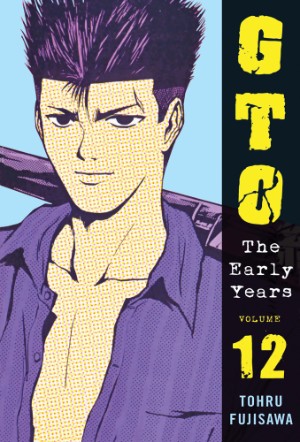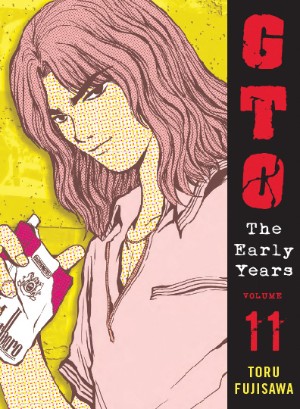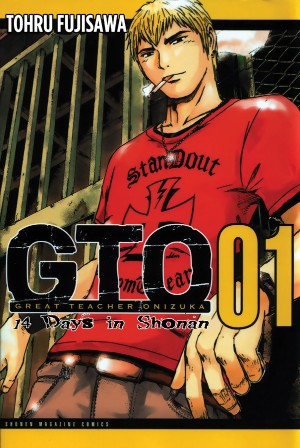By Toru Fujisawa. Released in Japan as “Shonan Jun’ai Gumi” by Kodansha, serialized in the magazine Weekly Shonen Magazine. Released in North America by Vertical.
Volume 11 of this manga was fortuitously focused on Onizuka. I say fortuitously because when you’re reintroducing a series via a different publisher that didn’t sell well in the first place, it’s always best to drum up sales by featuring the one character people absolutely love. This next volume, however, reminds you that GTO: The Early Years didn’t just star Onizuka, but his best friend Ryuji Danma, and he gets most of the focus here.
This is not to say there isn’t also plenty of Onizuka. He gets most of the first half, actually, as we resolve the Joey storyline from the previous volume. As you might guess form a delinquent story set in Shonen Magazine, this is not done through graphic violence and killings, but via a motorcycle race. Joey is on one of the best bikes around, Onizuka is on a legendary old bike whose best days are behind it. Guess who wins. It’s notable that, while we all know Onizuka as a cool character who is constantly allowed to be a giant comedic goof, he also works well in the opposite direction: Onizuka is a goofy, horndog teen who can nevertheless back up his boasts with feats of utter badassery. And of course teaching valuable lessons, which he does with Joey here.
Meanwhile, Onizuka gets to cool moments, but Ryuji gets the emotional turmoil. (Not a surprise: Ryuji has always been vaguely more mature than his best friend. Note I said vaguely.) First of all, he’s dealing with his former teacher and first love appearing back in his life again, right when he’s trying to settle down with Nagisa. Secondly, there’s the ongoing issues with Joey, and his girlfriend being used as “bait” to draw out the two leaders. But both of these pale next to the end of his “castle” and idyllic trailer park life, as the cops arrive to destroy everything, and Nagisa’s parents arrive to take their runaway daughter back home. Ryuji, of course, is forbidden to see her.
There’s a lot of teen angst here, which I can’t help but see from a slightly older perspective. For all that Ryuji and Nagisa were living in their happy fantasy, a bus in the middle of a field, with no real prospects for the future is not something to cling to. I think Nagisa gets that more than the others. While Onizuka and Shinomi are wondering why they can’t be left alone, Nagisa’s the one noting that no matter where they run, adults (and by extension reality) will still exist. They can’t face life as a loving couple on teenage terms. Growing up has to be done. And for the moment, that means dealing with her being under house arrest and having to communicate via written messages.
There is still, lest this all sound like a bummer, plenty of humor – this is an Onizuka manga, after all. The catfight between Shinomi and Saya over Onizuka is ridiculous and hilarious, as is the chapter where Nagisa reveals she might be pregnant, and everyone goes completely out of control. (Spoiler: she isn’t.) Best of all, though, is Onizuka accidentally ending up in the middle of a yakuza job, and finding the horrifying things you would expect – all played for comedy, of course. All in all, the series continues to give us what Fujiwara does best: lots of fighting, lots of goofy faces, a few heartwarming/heartbreaking moments, and lots of a future Great Teacher.





